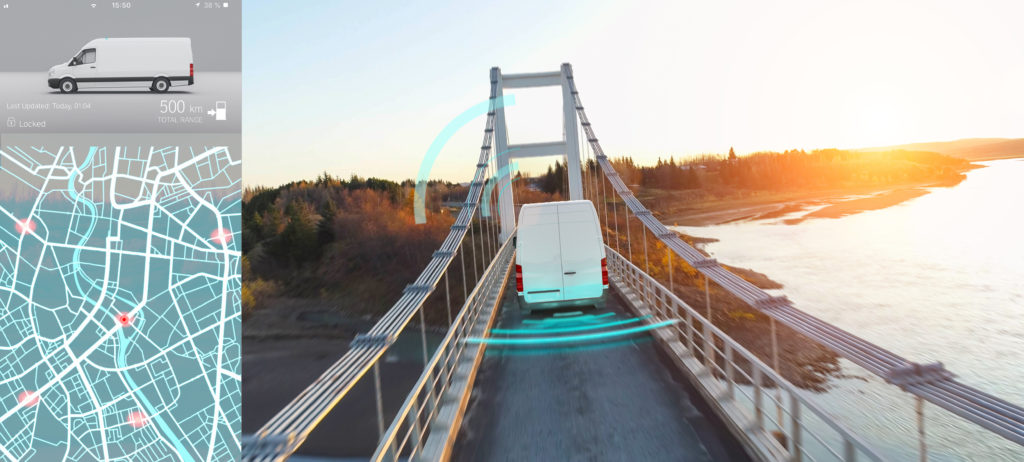
Sensors have become an integral part in both proper brake monitoring and advanced driver assistance systems, and integrating these two aspects of modern trucking can boost component longevity, decrease vehicle downtime, and create easier maintenance, according to industry manufacturers.
The marrying of these two aspects is crucial for progressive development of ADAS–the foundation of autonomous driving and truck platooning technology.
Truck platooning is when multiple trucks travel together, with one typically following the other closely. In these circumstances, “you want to know what the brake health is on all the vehicles,” said Meritor director of brake engineering, Joe Kay.
This means fleet operators must always know exactly how a brake is functioning, and temperature, wear, and stroke sensors can detect an issue on any of the 10 wheel ends of a tractor-trailer and send an alert.
“Sensing is a key component of the future of our industry,” said fleet maintenance executive and consultant Brett Wacker. “In the absence of the human, you have to have the ability to know whether things are working or not working.”
Camera, radar, and lidar sensors are used on a vehicle to implement accurate overall perceptions and to detect object speed and vector. Once those sensors are in place, braking system tech can work in tandem with them.
Haldex vice president of research and development, Brian Marshall, explained that the difficulties of developing effective ADAS lies in the ability for sensors to detect everything around a vehicle “and plan accordingly, whether for brake actuation on automatic emergency braking or for autonomous vehicle development.”
For example, if a roadway is slick from rain, ADAS should be able to detect that and increase the vehicle’s following distance, said Marshall. “That has to be determined by an integrated approach where the brake system can openly communicate and provide data from the wheel end up to the controller.”
For SAE International, automated driving capabilities have been sectioned into six levels–from zero to five.
“There’s a lot of talk about getting to Level 4 and Level 5,” said Bendix Commercial Vehicle Systems director of marketing and customer solutions for controls, TJ Thomas. Presently, he said, ADAS for commercial vehicles is at Level 1, and nearly at Level 2.
Bendix has been collaborating on upgraded features for its driver assist product that will be “enabled by the current level of technology–the current radars, the current cameras,” explained Thomas. “As we learn more about them over time, we can enable new features.”
ZF North America’s Julian Plenchette explained that with sensors, brake actuation can be improved “to automatically reproduce the comfort and finesse of the human-actuated braking.” ZF has a modular braking system platform called mBSP, which simulates driver brake actuation with the utilization of a “digital foot brake valve.”
This platform gives trucks the ability to have adaptive cruise control, which includes “Stop & Go,” a feature that allows a truck to “safely reduce speed down to [zero] miles per hour when following another target and maintaining [zero] miles per hour until the vehicle detects that it is safe to increase speed once again,” explained Plenchette.
Electronic stability control also uses sensors, and can detect wheel speed differences and mass transfers in order to notice any possible instability or loss of control.
ZF North America’s Patrick Kealy also explained that brake pad and axle monitoring sensors on trailers can also work with a ZF Intelligent Anti-Lock Braking System so that information can be sent throughout the trailer from the sensors. This system can decrease connectivity costs between a fleet management system and a trailer, and with Wabco’s TrailerCast, this telematics device can communicate with iABS and its sensors. Then, data is sent to the fleet’s management system from the device over a 4G network.
One instance of iABS connecting to brake pad and axle monitor sensors is that of Hendrickson’s MAXX22T trailer air disc brake, which connects to brake pad-wear sensors and communicates with iABS for brake pad status updates. Then, iABS is paired with TrailerCast and can send trailer mileage, ABS faults, and brake system status reports straight to a fleet.
Reader Interactions